|
|
|
|
|
NOTES ON THE ORIGINS OF GIANT MANTA AND HORN - 1 Written August 2006 |
NAVIGATION
|
Giant Manta and Giant Horn Hiro grades, Summer 2006
Manta, SPC 484
HORN, SPC 485 Length 8.5 inches (21.5 cm), Weight 5.3 oz. (150 g)
|
|
|
OVERVIEW OF ANTECEDENTS Below is a small part of the fascinating evolution of these pipes: |
|
SPC 316 "Floppy Horn" (2004), SPC 476: "Modern Manta," (Hiro 2006), Giant Manta, NON−SPC: Sandblast Horn (1 snail 2005), Giant Horn |
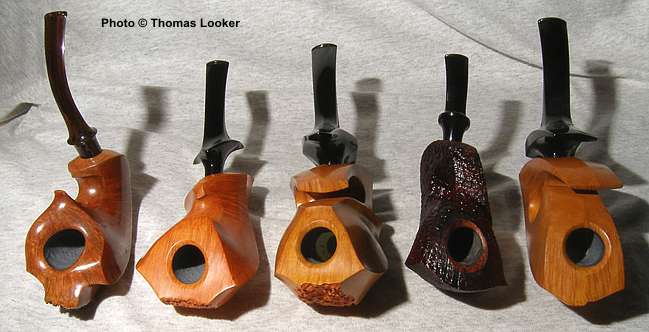
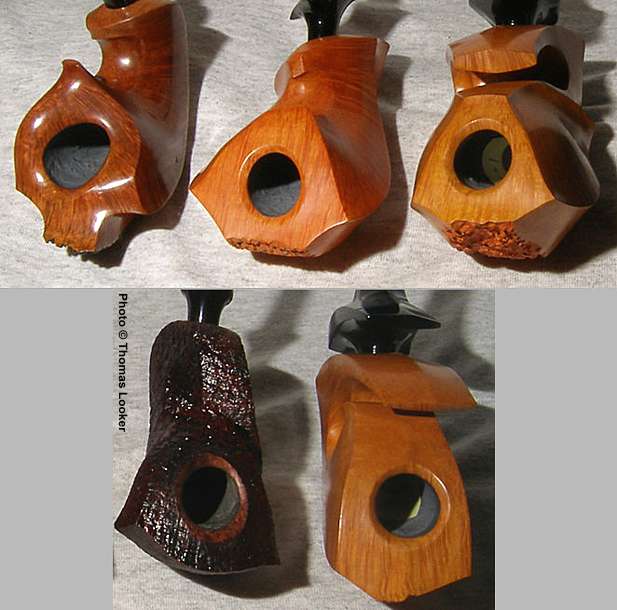
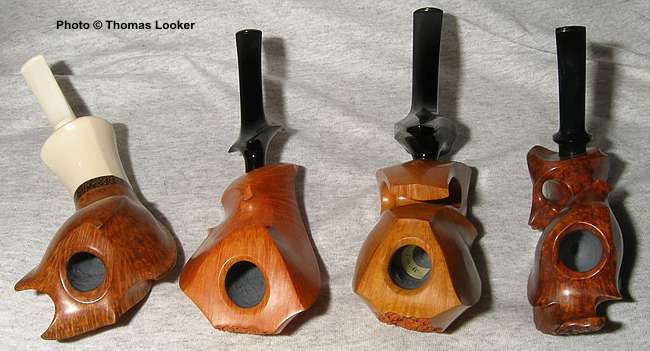 |
|
SPC 349: Manta with ivory (Hiro 2005), SPC 476: "Modern Manta" (Hiro 2006), Giant Manta, SPC 387: "Spanish Dancer" (3 snails 2005) |
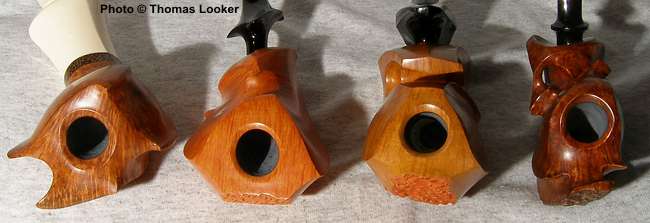 |
|
The Giant Horn with two earlier Horns (the sandblast came from Scandpipes). Note what's happened to the curl of the tail. Even the simplified "squashed" horn (SPC 385, 3 snails, 2005) expresses a certain organic fluidity in the curl of the tail round the hole. By contrast, the energy in 485 comes from the rather geometrically-shaped extension that sweeps upwards out of the shank. |
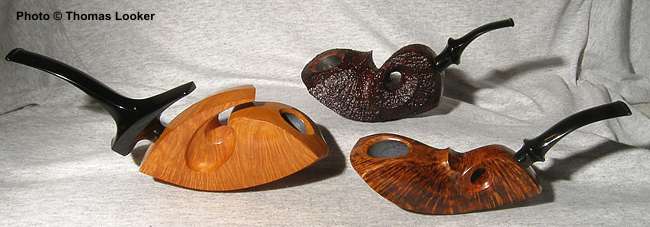
|
"Giant Horn," NON-SPC Sandblast horn with tail (1 snail 2005) SPC 385: "Squashed horn," (3 snails 2005) |
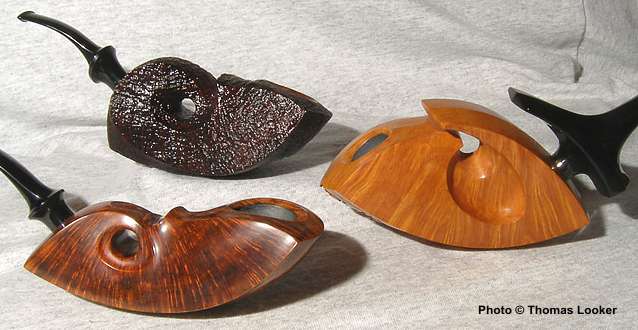
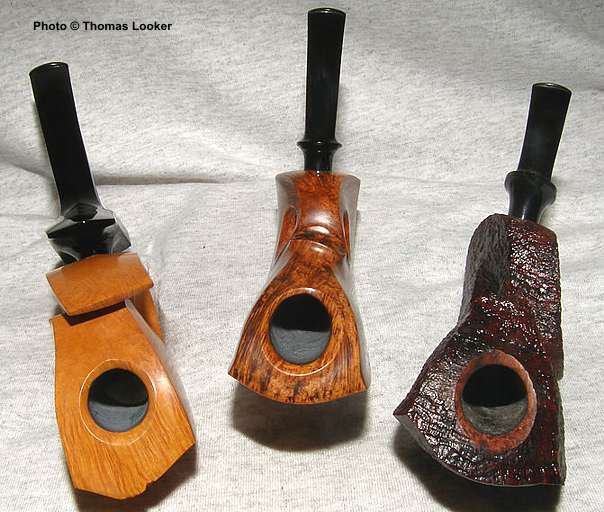
|
An earlier simplification (the "squashed" manta-horn) merges the top of the head into the tail, yet the composition retains remarkable organic fluidity (note, for example, the way the tail curls into the body [shank]). The newer pieces (especially 485) seem to go for a more "monumental" kind of simplification (if that makes any sense). |
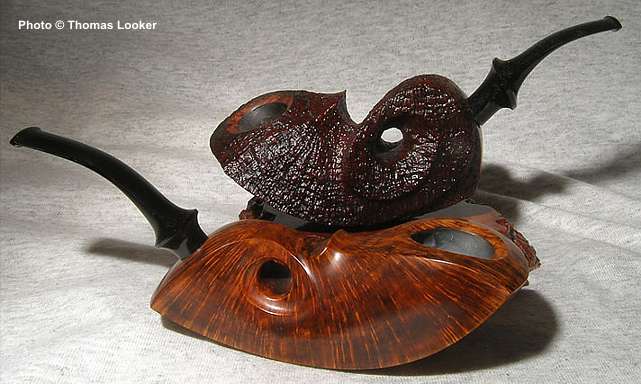
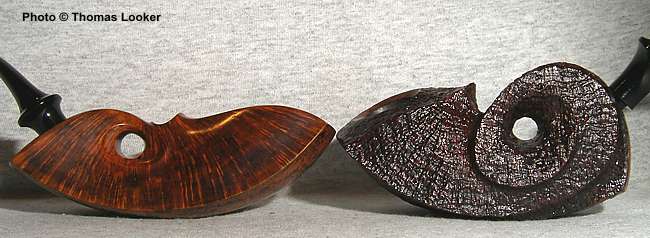
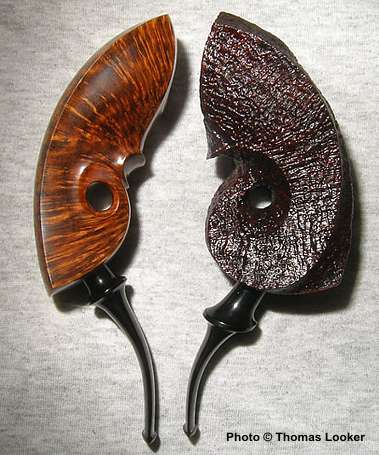
|
The continued simplification of form: the tail becomes less "organic" and the "top of the head" gets "shaved." |
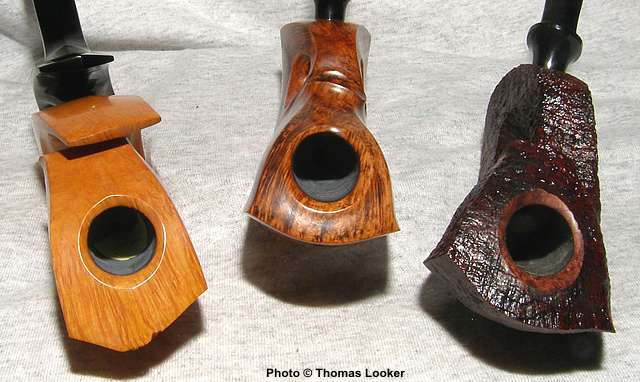
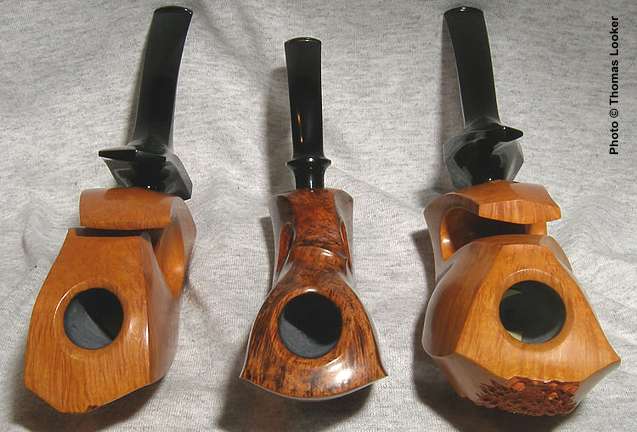
NAVIGATION
END OF NEW MANTA AND HORN 1